In the first game of the Women’s World Championship Match, challenger Lei Tingjie surprised defender Ju Wenjun in the opening, but Black managed to hold a draw
The first game of the match for the title of Women’s World Champion started sharp at 3 PM local time in Shanghai. As determined in the drawing of lots, the challenger Lei Tingjie was leading the white pieces against the defender, Ju Wenjun.
The first game of the match saw a first surprise as Lei opened with 1.e4 instead of her usual 1.d4.

In the Berlin Defence of Ruy Lopez with 5.Re1, White opted for a rare line sacrificing a central pawn for the initiative. Ju, although taking more time on the clock, managed to counter effectively, eventually returning the extra pawn to exchange the queens and thwart White’s hopes of mounting an attack. Still, White has a small edge thanks to a slightly better pawn structure and two bishops.
Neither side managed to tilt the balance for a long time. However, at one point, the world champion made an inaccuracy with move 26…a6, which allowed White some chances. Lei leapt at the opportunity and got a better better position but then simplified and entered what was an even rook endgame. Ju had one problem in the background – she was significantly behind on the clock and had little time to calculate. Despite time troubles, Ju managed to reach the first time control and hold the position.

After 50 moves and just over three hours of play, the game ended in a draw.
Although Lei surprised the world champion, she was unable to gain the upper hand. Nevertheless, the unexpected start promises more excitement in the upcoming games.
In the press conference, both players said it was a tough game but that they feel confident about how it began. Both Ju and Lei praised the point that the match is taking place in China and think it will prove to be a turning point for Chinese chess.
“This is a good thing for Chinese chess. Our chess organisation is doing a lot to promote the game and this will help,” said the defending champion Ju. ‘More children will take up chess and this is good for China and chess’, Lei added.

Game two starts on Thursday, 6th July at 3 PM local time in Shanghai (+8 GMT).
Here follows a closer look at the game one of the match:
Lei Tingjie is known for playing 1.d4 as her first move, but she surprised her opponent by opening with 1.e4.
Ju opted for the popular Berlin Defence in the Ruy Lopez. Popularised by Vladimir Kramnik in his 2000 title match against Kasparov, the Berlin is considered to be a drawing weapon for Black and has been extensively used at the top level in recent years.
Following exchanges in the centre, Lei went for a line in which she gave up a central pawn for better development, hoping to grab the initiative.
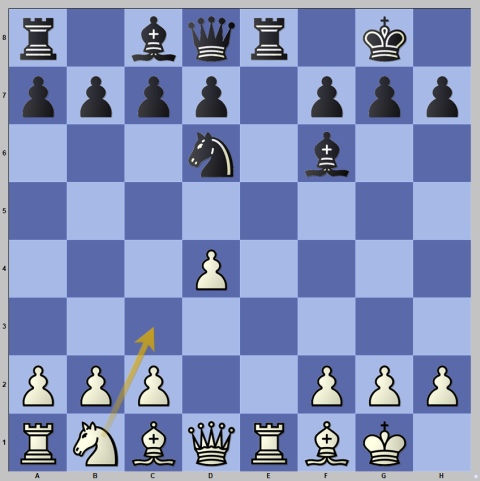
11.Nc3 Played quickly by Lei, suggesting this is her preparation. The moves 11.c3 or Bf4 are considered as the main continuations here.
11…Rxe1 12.Qxe1 Bxd4 13.Bd3
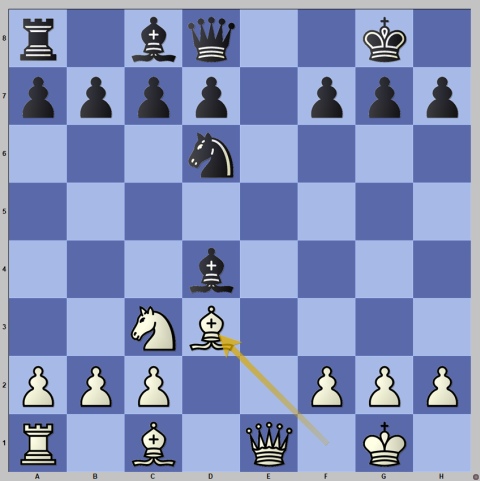
13.Bf4 is considered the main line. 13.Bd3 is a relatively new move recently played by such strong players as Fabiano Caruana, Parham Maghsoodloo and Jorden van Foreest. White is preventing Black from getting the knight on the thematic f5-square.
White has a pair of bishops and the initiative compensating the sacrificed pawn. Black has to be cautious of an obvious threat with Qe4 – simultaneously threatening mate and attacking the bishop on d4.
As White was building up pressure, it was noticeable that Black spent significantly more time: by move 20, Lei had an hour and 23 minutes, while Ju was down to 50 minutes.
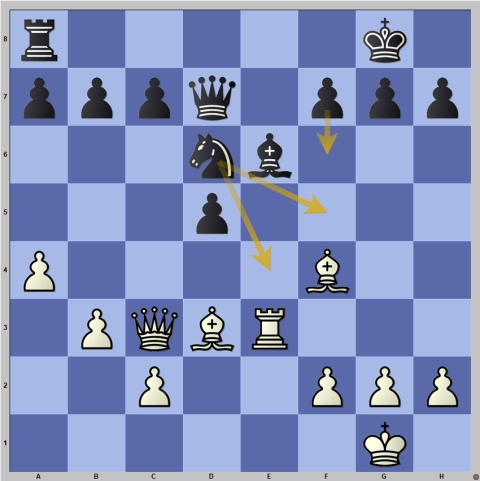
19…Ne4 Played after 20 minutes. 19…f6 or 19…Nf5 considered to be better options.
Ju decided to give up her extra pawn to stabilize the position and liquidate into an endgame. However, White kept a small edge thanks to two bishops and a slightly better pawn structure. At some point, Ju silently offered a draw by move repetition, but Lei refused and rightly so, as her opponent committed an inaccuracy a few moves down the road.
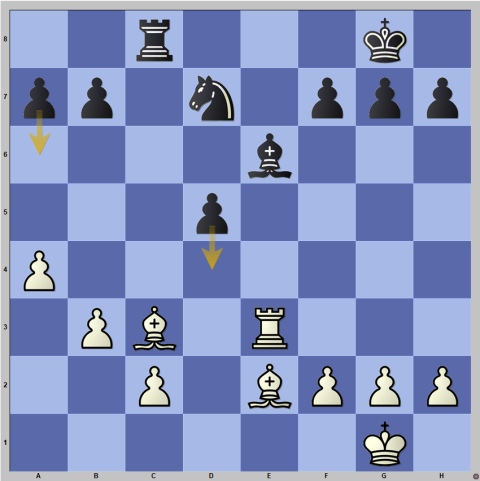
Instead of 26…d4 Ju played 26…a6 giving White some interesting options.
Lei immediately started her push on the kingside with 27.h4. Another – probably even better – move was 27.Bd1, protecting c2-pawn and untying her dark-squared bishop.
After another imprecision by Black 27…Nf8 (instead of 27…d4). White’s hopes in the game have suddenly increased. Lei continued her kingside advance, and after 28.g4 (28.Bd1 also looks interesting) 28…f5 the opponents reached the critical juncture of the game.
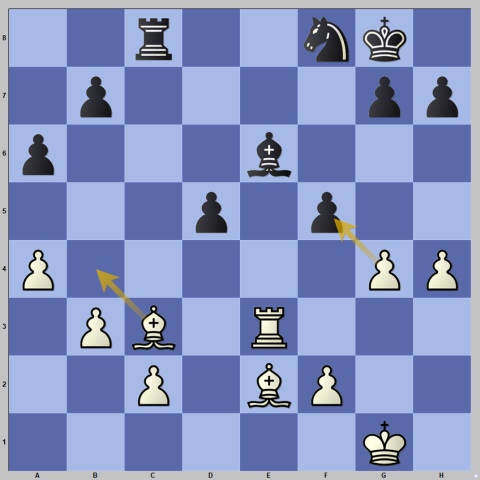
After 29.Bb4 Kf7 30. gxf5 Bxf5 31. Re7+ Kf6 32. c4 dxc4 33. Bxc4 Be6 34. Bxe6 Nxe6 35. Rxb7 White could have emerged with an extra pawn and some winning chances.
However, with 29.gxf5 Lei loosened her grip, as after 29…Bxf5 30.Bf3 Be4! the worst was behind Black. By this point, Ju had 10 minutes on the clock while Lei had 21, and the inaccuracies crept in again. As a result, White got an edge, but then it was Lei’s turn to err.
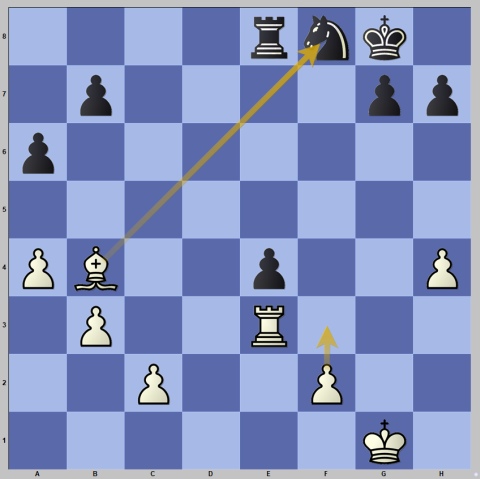
With 33.Bxf8?! White exchanged her strong bishop for a passive Black’s knight, dropping the advantage immediately. Better options were Kg2, Rc3 and f3.
As Black was worse on time, this exchange only played into Ju’s hands. Although Ju had a weak pawn on e4, it was not enough for White to make substantial progress. The only hope for Lei was to go after the b5-pawn, with the idea of creating two passers on the queenside, but Ju effectively countered this plan by attacking the c2-pawn.
After reaching the first time control, White created a passer on the b-file, but Black held comfortably thanks to her active rook. After 50 moves and just over three hours of play, Lei and Ju decided to call it a day and split a point.
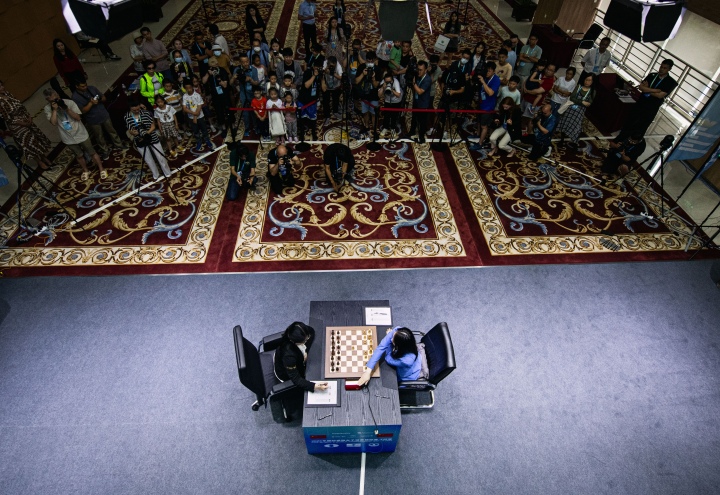
Text: Milan Dinic
Photos: David Llada and Stev Bonhage
Official website: womenworldchampionship.fide.com/
About the Match
The match will take place in two Chinese cities, where each of the contestants comes from. The first half of the match will be in Shanghai, while the second half takes place in Chongqing.
The match will consist of 12 games of classical chess. The payers will have 90 minutes for the first 40 moves, followed by 30 more minutes for the rest of the game, plus a 30-second increment per move starting on move one.
Players cannot offer a draw before they reach the 41st move.
In case of a tie, there will be the following tiebreaks:
Four games with a 25+10 time control.
Two games with a 5+3 time control.
Two more games with a 5+3 time control.
One game with a 3+2 time control, until a winner is determined.
The prize fund is €500,000, with €300,000 going to the winner and the remaining €200,000 to the runner-up.
If the outcome of the match is decided upon tiebreaks, the winner will take €275,000, while the runner-up will receive €225,000.








